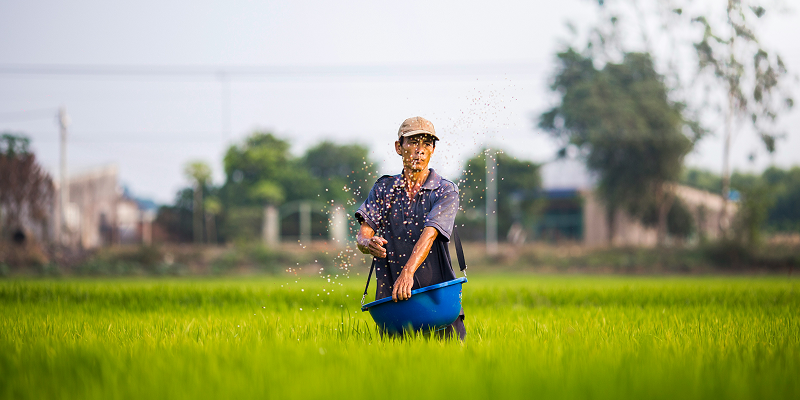Across the globe, over 3.6 billion people (World Bank)—many of whom reside in low-income rural regions or urban slums—remain perilously vulnerable to financial collapse from a single disaster. Yet, they lack any form of insurance protection. These individuals, often smallholder farmers or informal workers scraping by on minimal resources, find traditional insurance entirely out of reach due to its prohibitive costs and overwhelming complexity, leaving them exposed to risks that could erase their livelihoods in an instant.
Microinsurance, with its promise of affordable coverage tailored to their needs—like premiums as low as one dollar per month—offers a transformative solution, but only if it can overcome the immense challenge of scaling to meet this vast, unmet demand. No organization can achieve this alone, as startups can innovate rapidly yet struggle with limited reach, governments can mobilize resources but often lag in execution, corporations wield financial power but resist change, and NGOs excel at community trust yet falter in technological expertise.
The answer lies in a sophisticated four-way partnership model—bringing together startups, governments, corporates, and NGOs in a coordinated effort—which holds the potential to unlock a revolution in microinsurance and safeguard millions from catastrophe.
The Stakes: Why Microinsurance Matters Now
Today, the urgency for microinsurance grows more pressing than ever. As climate change unleashes unpredictable weather patterns— from prolonged droughts to devastating floods— the lives of smallholder farmers relying on stable seasons for survival, are threatened. Meanwhile, pandemics and economic instability expose the vulnerability of informal workers, who lack any safety net.
Traditional insurance, burdened by high premiums averaging $50 annually and complex paperwork inaccessible to those without formal education, fails miserably to serve these populations, leaving a gaping void that microinsurance aims to fill with its low-cost, straightforward products delivered through widely available mobile technology. For instance, a farmer in rural India, facing the loss of an entire rice harvest due to a failed monsoon, cannot afford conventional coverage, but a microinsurance policy costing just $1 monthly—paid via a simple phone transaction—could provide the funds needed to replant and sustain her family.
Despite this potential, the International Labour Organization (ILO) estimates that microinsurance currently reaches less than 15% of its target market—approximately 192 million people out of a possible 1.2 billion—because scaling such a system demands far more than isolated efforts; it requires a robust, interconnected ecosystem of players working in unison.
The Four Players: Roles in the Revolution
The impact of microinsurance doesn’t emerge in isolation—it is the result of a carefully orchestrated effort among multiple players, each bringing unique strengths to the table. While microinsurance holds the potential to protect millions from financial shocks, its success hinges on an ecosystem that fosters innovation, ensures accessibility, and builds trust among those who need it most.
At the heart of this revolution are four key stakeholders, working together to make microinsurance scalable and sustainable.
Startups act as the innovators, driving new models through advanced technology—whether it’s mobile applications for seamless enrollment, artificial intelligence for precise risk assessment, or blockchain for instant payouts. However, their biggest challenge lies in scaling beyond pilot projects due to limited financial resources and network reach.
Governments serve as the enablers, providing crucial support through subsidies, public data (such as weather records), and policies that encourage adoption. Yet, bureaucratic inefficiencies often slow the momentum of their well-intentioned initiatives.
Large corporations, especially insurers, function as the financial backbone, offering underwriting capacity, reinsurance to manage risk, and vast distribution networks. However, their cautious approach can sometimes delay the adoption of innovative but untested solutions.
Multilateral organizations and NGOs step in as the connectors, leveraging their deep community trust to educate and extend insurance to marginalized populations. While instrumental in outreach and awareness, they often lack the technical infrastructure to implement solutions independently.
Only when these four forces align—such as a startup’s weather-based insurance product funded by government support, distributed through a corporate network, and promoted by an NGO—can microinsurance become an accessible reality for those who need it most.
But how does this collaboration translate into a functioning system? The next section breaks down the mechanics of how microinsurance works in practice.
How It Works: A Real-World Blueprint
To illustrate the power of this four-way partnership model in action, consider the collaboration between Weather Risk Management Services (WRMS) Global and India’s Pradhan Mantri Fasal Bima Yojana (PMFBY), which demonstrates how these stakeholders unite to deliver microinsurance at an unprecedented scale with tangible results for farmers facing climate risks.
In India, where 70% of farmers depend on rain-fed agriculture and face frequent crop losses due to erratic weather, PMFBY—a government-initiated scheme launched in 2016—aims to provide affordable crop insurance with premiums as low as 2% of the insured value, subsidized heavily by public funds to ensure accessibility for millions.
As an AgTech innovator, WRMS Global has played a pivotal role in strengthening PMFBY by developing WINDs (Weather Information and Decision Support)—a cutting-edge web portal that integrates real-time weather data from satellites and ground stations directly into the insurance framework. This system enables automatic claims processing, ensuring that payouts are triggered swiftly when predefined weather thresholds—such as extreme heat or rainfall deficits—are breached..
PMFBY’s corporate insurance partners, responsible for underwriting and claims processing, provide the financial backbone for this initiative, while NGOs and rural cooperatives drive grassroots engagement by enrolling farmers, educating them about the insurance process, and building trust in regions where traditional insurance has historically struggled to gain acceptance..
By 2023, PMFBY had insured over 56 million farmers annually, and with the integration of WRMS’s WINDs portal, payout times were reduced from months to just weeks. In one case, a farmer in Maharashtra affected by drought received $20 within 10 days, allowing him to quickly replant his crop—a real-world demonstration of how an effective four-way partnership can deliver timely, life-changing support at scale.
Overcoming Barriers: Making Collaboration Stick
While the potential of this four-way partnership shines brightly, achieving seamless collaboration requires overcoming significant barriers that, if left unaddressed, could derail even the most promising initiatives and prevent microinsurance from reaching its full impact. Misaligned goals often create tension, as startups prioritize profit to sustain their operations, NGOs focus relentlessly on social impact for the communities they serve, and governments fixate on regulatory compliance or political optics, leading to conflicts that stall progress unless resolved through shared objectives—such as the number of policies sold or claims successfully paid—that align all parties toward a common purpose.
Trust gaps further complicate matters, with corporates wary of startups’ financial instability or unproven models and rural populations suspicious of unfamiliar institutions, necessitating small-scale pilot projects—like a trial insuring 500 farmers in a single district—that build confidence and demonstrate reliability before expanding to larger regions.
Bureaucratic delays within government systems can stifle the rapid deployment of innovative technology, a challenge that can be mitigated by leveraging existing frameworks like PMFBY rather than crafting entirely new policies from scratch, allowing faster integration of startup solutions.
Funding imbalances also pose a risk, as corporates often dominate financial contributions while NGOs struggle with limited resources, requiring equitable allocation through neutral facilitators—such as industry associations—to ensure all players can contribute effectively.
In the WRMS-PMFBY partnership, initial distrust from farmers wary of insurers was overcome by NGO-led village workshops, while WRMS’s successful pilot in one state convinced stakeholders to scale up, showing that persistence and clear roles can turn obstacles into stepping stones.
The Impact: What’s at Stake
When this four-way model operates at its full potential, the impact extends far beyond individual policies, offering transformative benefits that ripple across communities and nations, fundamentally altering the landscape of financial security for the world’s most vulnerable populations. Financial inclusion becomes a reality as millions gain access to a safety net—where a $5 payout after a flood might prevent a family from selling their last assets to survive—lifting entire households out of poverty cycles that have persisted for generations.
Resilience strengthens dramatically, enabling communities to recover from natural disasters or health crises rather than merely endure them, with the World Bank estimating that insured households recover 30% faster economically than uninsured ones after a shock. Scalability emerges as a powerful outcome, with successful models like PMFBY inspiring replication across the Global South—potentially covering 500 million people by 2030, according to ILO projections—if governments, corporates, startups, and NGOs replicate this blueprint in regions like Africa or Southeast Asia.
In India alone, PMFBY’s collaboration with WRMS has insured millions of farmers annually, a number that could double globally with sustained effort, underscoring that this isn’t merely about insurance—it’s about building stability for those who need it most.
Call to Action: Join the Movement
The momentum behind microinsurance is undeniable, and its success hinges on collaboration. As we’ve seen, when technology, policy, financial expertise, and grassroots engagement come together, real impact follows—providing timely protection to those who need it most.
The path ahead requires continued innovation and partnership. Insurers, governments, NGOs, and startups each play a crucial role in expanding access, improving efficiency, and ensuring that no farmer, worker, or family remains vulnerable to unpredictable risks. By working together, we can build resilient systems that not only safeguard livelihoods today but also create a more secure future for millions.
The opportunity to shape this transformation is here. Let’s take the next step—whether through new technology, smarter policies, or stronger outreach—and turn this vision into reality.

